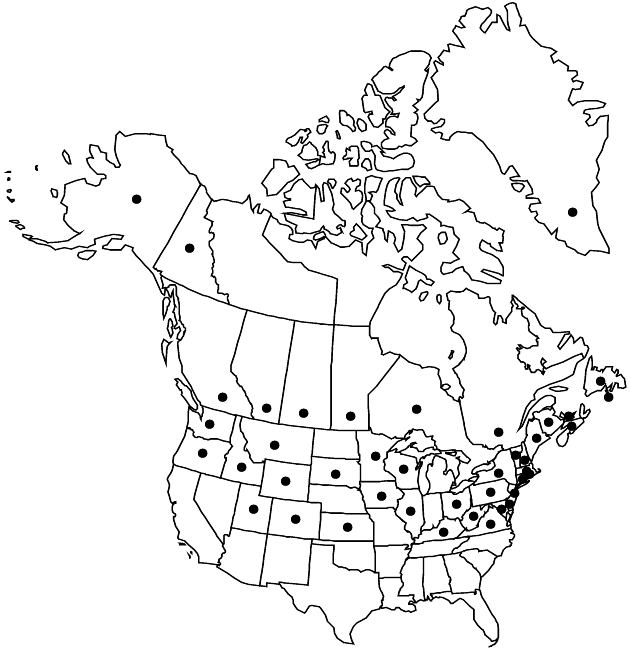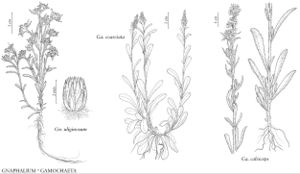Gnaphalium uliginosum
Sp. Pl. 2: 856. 1753.
Annuals, 3–15(–25) cm; taprooted or fibrous-rooted. Stems erect, usually branched from bases, sometimes simple, closely to loosely tomentose. Leaf blades oblanceolate, 1–5 cm × 1–3 mm. Bracts subtending heads linear, oblanceolate, or obovate, 5–15 × 1–2 mm, usually surpassing glomerules. Heads borne singly or in terminal, capitate glomerules, sometimes in axillary glomerules. Involucres 2–4 mm. Phyllaries brownish, bases woolly, inner narrowly triangular with whitish, acute apices. 2n = 14.
Phenology: Flowering Jul–Oct.
Habitat: Lake and pond margins, stream banks, wet meadows, other permanently or sporadically moist sites, disturbed sites
Elevation: 1400–3000 m
Distribution

Greenland, St. Pierre and Miquelon, Alta., B.C., Man., N.B., Nfld. and Labr. (Nfld.), N.S., Ont., P.E.I., Que., Sask., Yukon, Alaska, Colo., Conn., Del., Idaho, Ill., Iowa, Kans., Ky., Maine, Md., Mass., Minn., Mont., N.H., N.J., N.Y., Ohio, Oreg., Pa., R.I., S.Dak., Utah, Vt., Va., Wash., W.Va., Wis., Wyo., Europe.
Discussion
Gnaphalium uliginosum is native to Europe; it is not clear whether some or all of the North American plants may have been introduced into the flora.
Selected References
None.
